History of Aromatherapy
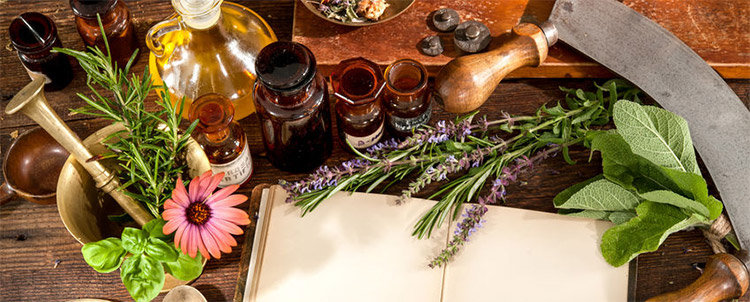
In brief, aromatherapy is the use of volatile plant oils, including essential oils, for psychological and physical well-being.
The history of aromatherapy and the exploration of its origins is quite fascinating. Although the term aromatherapy was not used until the 20th Century, the use of aromatic botanicals and aromatic oils date back thousands of years. Distillation and the use of essential oils dates back nearly one thousand years.
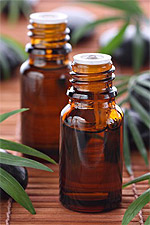
The Chinese may have been one of the first cultures to use aromatic plants for well-being. Their practices involved burning incense to help create harmony and balance.
Later, the Egyptians invented a rudimentary distillation machine that allowed for the crude extraction of cedarwood oil. It is also thought by some that Persia and India may have also invented crude distillation machines, but very little is known.
[Update: Since writing the original version of this article back in the late 1990s, I've been intrigued to learn of a 2005 archaeological discovery of a clay alembic still that is approximately 4,000 years old. This still was found on Cyprus and apparently included bowls that when tested, indicated that the still was used to perform distillations of rosemary, lavender and other botanicals. [Ann Harman, Harvest to Hydrosol (Fruitland, WA: botANNicals, 2015), 7.] However, since stills of similar ages haven't been discovered elsewhere to my knowledge, it's not clear whether distillation occurred outside of this region during that time period.]
Oils of cedarwood, clove, cinnamon, nutmeg and myrrh were used by the Egyptians to embalm the dead. When a tomb was opened in the early 20th century, traces of the herbs were discovered with intact portions of the body. The scent, although faint, was still apparent. Although the cedarwood the Egyptians used was distilled by a crude distillation process, the other oils the Egyptians used were most likely infused oils.
The Egyptians also used infused oils and herbal preparations for spiritual, medicinal, fragrant and cosmetic use. It is thought that the Egyptians coined the term perfume, from the Latin per fumum which translates as through the smoke. Egyptian men of the time used fragrance as readily as the women. An interesting method that the men used to fragrance themselves was to place a solid cone of perfume on their heads. It would gradually melt and would cover them in fragrance.
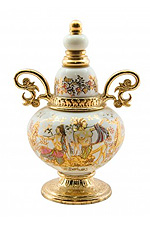
The Greeks learned a great deal from the Egyptians, but Greek mythology apparently credits the gift and knowledge of perfumes to the gods. The Greeks also recognized the medicinal and aromatic benefits of plants. Hippocrates, commonly called the "father of medicine" practiced fumigations for both aromatic and medicinal benefit. A Greek perfumer by the name of Megallus created a perfume called megaleion. Megaleion included myrrh in a fatty-oil base and served several purposes: (1) for its aroma, (2) for its anti-inflammatory properties towards the skin and (3) to heal wounds.
The Roman Empire built upon the knowledge of the Egyptians and Greeks. Discorides wrote a book called De Materia Medica that described the properties of approximately 500 plants. It is also reported that Discorides studied distillation. Distillation during this period, however, focused on extracting aromatic floral waters and not essential oils.
A major event for the distillation of essential oils came with the invention of a coiled cooling pipe in the 11th century. Persian by birth, Avicenna invented a coiled pipe which allowed the plant vapor and steam to cool down more effectively than previous distillers that used a straight cooling pipe. Avicenna's contribution lead to more focus on essential oils and their benefits.
Within the 12th century, an Abbess of Germany named Hildegard grew and distilled lavender for its medicinal properties.
Within the 13th century, the pharmaceutical industry was born. This event encourages great distillation of essential oils.
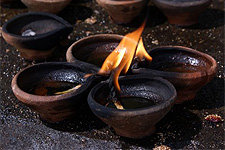
During the 14th century, the Black Death hit and killed millions of people. Herbal preparations were used extensively to help fight this terrible killer. It is believed that some perfumers may have avoided the plague by their constant contact with the natural aromatics.
Within the 15th century, more plants were distilled to create essential oils including frankincense, juniper, rose, sage and rosemary. A growth in the amount of books on herbs and their properties also begins later in the century. Paracelcus, an alchemist, medical doctor and radical thinker is credited with coining the term Essence and his studies radically challenged the nature of alchemy and he focused upon using plants as medicines.
During the 16th century, one could begin purchasing oils at an "apothecary," and many more essential oils were introduced.
During the 16th and 17th centuries, perfumery became an art form, and it was more clearly defined as its own field.
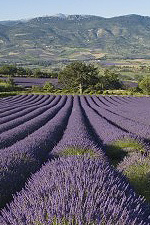
During the 19th century, perfumery remained a prosperous industry. Women would have their jeweler create a special bottle to hold their treasured perfume. The 19th century also was important scientifically as major constituents of essential oils became isolated.
During the 20th century, the knowledge of separating the constituents of essential oils was used to create synthetic chemicals and drugs. It had been believed that by separating the major constituents and then using the constituents alone or in synthetic form would be beneficial therapeutically and economically. These discoveries helped lead to "modern medicine" and synthetic fragrances. This actually weakened the use of essential oils for medicinal and aromatic benefit.
René-Maurice Gattefossé: The Father of Aromatherapy
During the earlier part of the 20th century, the French chemist René-Maurice Gattefossé became interested in the use of essential oils for their medicinal use. Previously, he focused on the aromatic use of essential oils, but his interest in their medicinal use grew further upon using lavender essential oil after an accident.
Gattefossé coined the term aromatherapy in 1928 within an article where he supports the use of using essential oils in their whole without breaking them down into their primary constituents. In 1937, Gattefossé wrote a book called Aromathérapie: Les Huiles essentielles hormones végétales that was later translated into English and named Gattefossé's Aromatherapy. It is still in print and widely read, and René-Maurice Gattefossé is considered to be the father (inventory) of aromatherapy.
Other highly respected early 20th century aromatherapists include Jean Valnet, Madam Marguerite Maury, and Robert B. Tisserand. Jean Valnet is most remembered for his work using essential oils to treat injured soldiers during the war and for his book, The Practice of Aromatherapy, originally entitled Aromathérapie in French. Austrian Madam Marguerite Maury is remembered as a biochemist who avidly studied, practiced and taught the use of aromatherapy for primarily cosmetic benefit. Robert B. Tisserand is an English aromatherapist who is responsible for being one of the first individuals to bring knowledge and education of aromatherapy to English speaking nations. He has written books and articles including the highly respected 1977 publication The Art of Aromatherapy. The Art of Aromatherapy was the first aromatherapy book published in English.
From the late 20th century and on into the 21st century, there is a growing resurgence to utilize more natural products including essential oils for therapeutic, cosmetic and aromatic benefit. The use of essential oils never ceased, but the scientific revolution minimized the popularity and use of essential oils in one's everyday life. Today's heightened awareness regarding the use of synthetics coupled with the increased availability of aromatherapy information within books and the Internet has refueled the use of essential oils for therapeutic, cosmetic, fragrant and spiritual use.
References:
Price, Shirley. Shirley Price's Aromatherapy Workbook. London, UK: Thorsons, 1993.
Tisserand, Robert B. The Art of Aromatherapy. Rochester, VT: Healing Arts Press, 1977.
Lawless, Julia. The Illustrated Encyclopedia of Essential Oils. Rockport, MA: Element Books, Inc., 1995.
Manniche, Lise. Sacred Luxuries: Fragrance, Aromatherapy & Cosmetics in Ancient Egypt. Ithaca, NY: Cornell University Press, 1999.
Gattefossé, René-Maurice. Gattefossé's Aromatherapy. Saffron Walden, UK: The C.W. Daniel Company Limited, 1993.
The Kevala Centre. Aromatherapy Origins and Background article.
American College of Healthcare Sciences. Certificate in Aromatherapy Course Book (version from 1999). Lake Oswego, OR.
Ann Harman, Harvest to Hydrosol Fruitland, WA: botANNicals, 2015.
